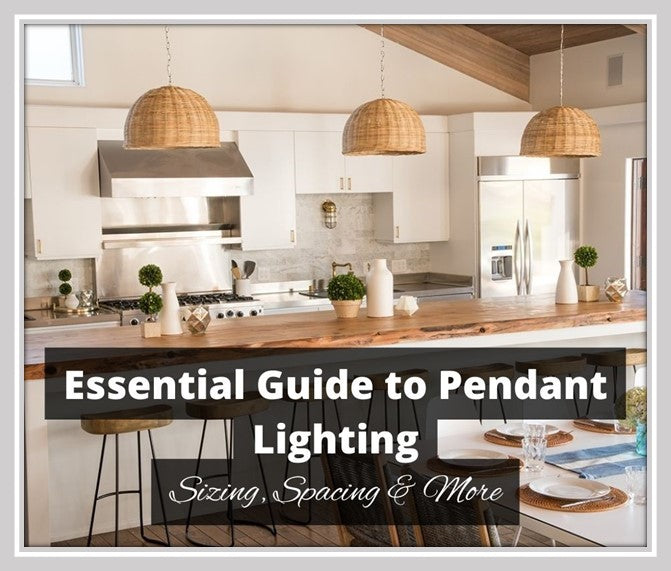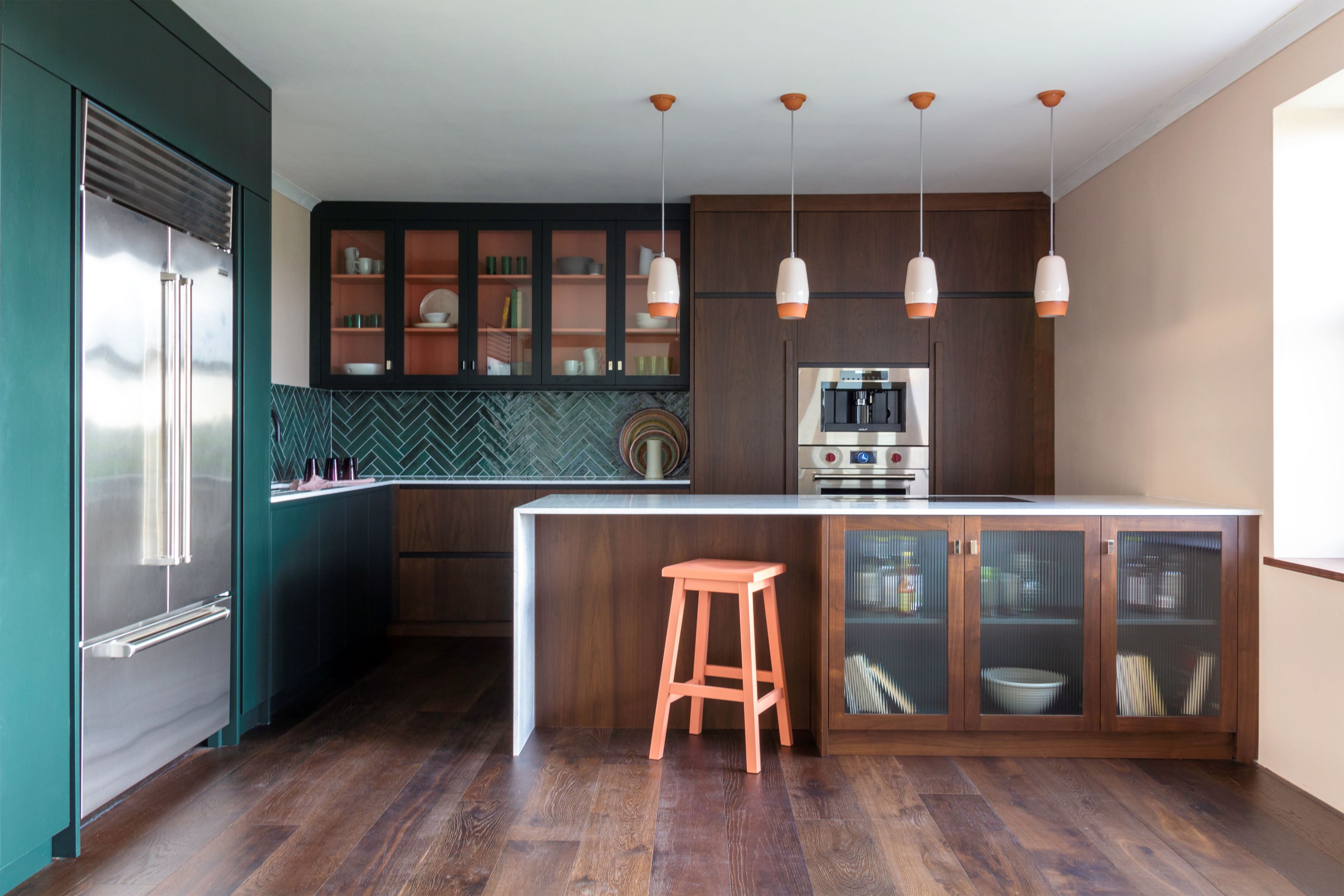The kitchen island should be a minimum of 36 inches away from cabinets, allowing for easy movement and access between the two. The placement of a kitchen island in relation to cabinets is crucial for both functionality and aesthetics.
It is recommended to maintain a distance of at least 36 inches between the island and cabinets. This distance is crucial as it allows for seamless movement and access when working in the kitchen. By providing ample space, you can ensure that you have enough room to open cabinet doors and drawers without any hindrance.
Furthermore, this proper spacing adds a sense of balance and harmony to the overall kitchen layout. So, when designing your kitchen, keep in mind the ideal distance between the kitchen island and cabinets to optimize your workflow and enhance the visual appeal of your space.

Credit: rtaoutdoorliving.com
Choosing The Right Distance
When designing or renovating your kitchen, it’s essential to consider the appropriate distance between your kitchen island and cabinets. Getting this distance right can enhance the overall functionality and flow of your kitchen space. Let’s explore some factors to consider when choosing the right distance.
Considering Workflow Patterns
One crucial aspect to take into account when determining the distance between your kitchen island and cabinets is the workflow patterns within your kitchen. By optimizing the distance, you can maximize efficiency and convenience in your daily cooking and food preparation tasks.
Consider the primary kitchen work triangle, which typically involves the sink, stove, and refrigerator. The kitchen island should be located so that it does not hinder the natural flow between these essential components. It should be positioned in a way that allows for easy movement and seamless transitions during cooking.
By maintaining an ideal distance, you can create a logical and harmonious workflow pattern that enables you to move between your kitchen island and cabinets effortlessly. This ensures that you can retrieve and store items efficiently while keeping your workspace organized and clutter-free.
Evaluating Room Size
Another critical factor to consider when determining the distance between your kitchen island and cabinets is the size of your kitchen. The dimensions of your kitchen space play a significant role in determining the appropriate distance for optimal functionality and aesthetics.
If you have a smaller kitchen, it’s crucial to ensure that there is enough space around the island to avoid feeling cramped. This will also prevent any potential collisions between individuals working in close proximity. On the other hand, if you have a larger kitchen, you may have more flexibility in terms of distance, allowing you to create a more spacious and open layout.
It’s essential to strike the right balance between functionality and aesthetics. While you want to have ample space to move around comfortably, you also want to ensure that the distance is visually pleasing and proportional to the overall kitchen design.
| Kitchen Size | Recommended Distance |
|---|---|
| Small Kitchen | 36-42 inches |
| Medium to Large Kitchen | 42-48 inches |
Remember, these recommendations are general guidelines, and the final decision should be based on your specific kitchen layout and individual needs.
In conclusion, choosing the right distance between your kitchen island and cabinets is crucial for optimizing workflow patterns and maintaining a functional kitchen. By considering the workflow patterns within your kitchen and evaluating the size of your kitchen space, you can ensure that the distance is both practical and visually appealing. Make your kitchen a harmonious and efficient space by finding the ideal distance that suits your needs.
Factors Affecting Placement
The placement of a kitchen island should consider the space needed between cabinets for efficient traffic flow. The ideal distance is typically 36 inches to allow for ease of movement and practical use of the island. It’s important to ensure that the island is positioned to enhance both functionality and aesthetics in the kitchen layout.
Traffic Flow
Traffic flow is a vital consideration when determining the distance between the kitchen island and cabinets. The space between the island and surrounding cabinets should allow for smooth movement within the kitchen. A minimum of 3 feet is recommended to ensure convenient access to the island and cabinets.
Functionality
The functionality of the kitchen island determines its ideal position. Consideration should be given to the purpose of the island, whether it is for food preparation, entertaining, or additional storage. The proximity to the cabinets will impact the ease of access and efficiency in the kitchen. It’s essential to maintain a balance between functional use and ease of movement.
Optimal Spacing Guidelines
When it comes to creating an efficient and aesthetically pleasing kitchen layout, the optimal spacing between a kitchen island and cabinets is crucial. Understanding the standard measurements and adjustments for personal needs can help in achieving a functional and appealing kitchen design.
Standard Measurements
The standard measurement for the distance between a kitchen island and cabinets is typically around 36 inches. This spacing allows for ease of movement and ensures that there is enough room for cabinet doors and drawers to open without obstruction. It also provides ample space for individuals to work and move around the kitchen island comfortably.
Adjustments For Personal Needs
While the standard measurement is a good starting point, it’s important to consider individual needs and preferences when determining the optimal spacing between a kitchen island and cabinets. Making adjustments based on the specific requirements of the kitchen users can enhance the functionality and usability of the kitchen space.

Credit: www.kouboo.com
Avoiding Common Mistakes
When it comes to designing a kitchen island, it’s important to consider its placement in relation to the surrounding cabinets. Making the right choices can enhance both functionality and aesthetics. In this section, we will discuss two common mistakes to avoid when determining how far your kitchen island should be from the cabinets.
Overcrowding The Space
One of the most common mistakes homeowners make when setting up their kitchen island is overcrowding the space. It’s crucial to leave enough room between the island and the cabinets to ensure smooth traffic flow and ample workspace. When the space is overcrowded, it can lead to frustration and inconvenience while preparing meals.
To avoid this mistake, consider the following:
- Measure the available space: Before determining the size of your kitchen island, ensure you have accurate measurements of the available space. This will help you determine the ideal distance between the island and the cabinets.
- Create a functional layout: Take into account the workflow in your kitchen and plan a layout that allows for easy movement between the island and the cabinets. Consider the placement of appliances, such as the refrigerator and stove, to ensure efficient access.
- Allow for comfortable seating: If you plan to incorporate seating into your kitchen island, ensure there is enough space for people to sit comfortably without feeling cramped. This will enhance the overall functionality of your kitchen island.
Ignoring Electrical Outlets
When designing a kitchen island, it’s essential to consider the placement of electrical outlets. Ignoring this factor can lead to inconvenience and limit the functionality of your island. Here are some important points to remember:
- Plan outlet placement in advance: Determine where you will need electrical outlets on your kitchen island, such as for small appliances or charging stations. Plan the design accordingly, ensuring easy access to power sources.
- Consult with a professional electrician: If you’re unsure about the electrical requirements, it’s best to consult with a professional electrician. They can assess your needs and provide expert advice on outlet placement to meet safety standards.
- Consider pop-up outlets: If you prefer a clean and streamlined look for your kitchen island, consider using pop-up outlets. These can be concealed when not in use, providing a neat appearance while still offering convenient access to power.
By avoiding these common mistakes of overcrowding the space and ignoring electrical outlets, you can ensure that your kitchen island is both functional and visually appealing.
Enhancing Aesthetics
Enhancing aesthetics by positioning your kitchen island at the right distance from cabinets can significantly elevate the overall look and feel of your kitchen space.
Creating Visual Harmony
Placing the kitchen island in a way that aligns with the cabinet design creates a cohesive and visually appealing look.
Balancing Proportions
Ensuring the distance between the island and cabinets maintains proportional balance fosters a harmonious and elegant aesthetic.
Utilizing Island-cabinet Relationship
In the realm of kitchen design, the relationship between the island and cabinets plays a vital role in both functionality and aesthetics. Utilizing this island-cabinet relationship effectively can enhance the overall appeal and practicality of your kitchen space.
Seamless Integration
The key to a cohesive kitchen design is to ensure a seamless integration between the island and cabinets. By maintaining consistent design elements such as color palette and materials, you can create a harmonious look that ties the two elements together effortlessly.
Storage Solutions
Maximizing storage is essential in any kitchen, and the island-cabinet relationship can offer various storage solutions to optimize space. Think about incorporating deep drawers or pull-out shelves in the island for easy access to pots and pans. You can also utilize the island as a dedicated storage area for frequently used items.
Consulting With Design Professionals
When it comes to designing a functional and aesthetically pleasing kitchen, making informed decisions is crucial. Determining how far your kitchen island should be from the cabinets is one such decision that requires careful thought and consideration. To ensure you create a well-balanced and efficient kitchen layout, it is highly recommended to consult with design professionals. Their expertise and knowledge can guide you towards making the right choices in terms of spacing and functionality.
Getting Expert Advice
Design professionals, such as kitchen designers or interior decorators, have the experience and skill set to provide valuable insights on kitchen layouts. They understand the importance of space planning and can offer expert advice tailored to your specific needs and preferences. By consulting with these professionals, you can tap into their knowledge base and gain a better understanding of how far your kitchen island should be from the cabinets.
Customizing For Your Space
Every kitchen space is unique, with its own set of challenges and opportunities. Design professionals can analyze your kitchen layout, taking into account factors like the size of the room, existing cabinets, and your desired island functionality. By customizing the design according to your space requirements, they can determine the optimal distance between the kitchen island and cabinets.
These professionals can also provide creative solutions and suggestions to maximize the functionality and aesthetics of your kitchen. They can assist you in selecting the right materials, colors, and finishes that align with your style and overall kitchen design. With their expertise, you can create a cohesive and visually appealing space that meets your practical needs.
In conclusion, seeking input from design professionals is crucial when determining the ideal distance between your kitchen island and cabinets. Their expertise and knowledge can guide you in making informed decisions and help create a well-designed kitchen that maximizes functionality and aesthetics. So, consult with design professionals to ensure you achieve the perfect kitchen layout for your space.

Credit: www.nakedkitchens.com
Frequently Asked Questions Of How Far Should Kitchen Island Be From Cabinets
How Far Should A Kitchen Island Be From Cabinets?
The ideal distance between a kitchen island and cabinets is about 36 inches. This provides enough clearance for walking and working in the kitchen while ensuring that the layout remains functional and visually appealing.
What Factors Should Be Considered When Deciding The Distance?
Consider the traffic flow, appliance placement, and overall kitchen layout when determining the distance between the island and cabinets. Ensuring easy access to the island, adequate workspace, and convenient pathways is essential for a well-designed kitchen.
Does The Kitchen Island’s Size Affect The Distance From Cabinets?
Yes, the size of the island directly impacts the distance from the cabinets. Larger islands may require more space to maintain a comfortable flow and sufficient workspace, while smaller islands may fit closer to the cabinets without impeding functionality or aesthetics.
Conclusion
To create an optimal kitchen layout, it is essential to determine the ideal distance between your kitchen island and cabinets. This ensures both functionality and aesthetics. By considering factors such as kitchen size, traffic flow, and personal preference, you can strike the perfect balance.
Remember, a well-planned kitchen setup enhances efficiency and enhances your overall cooking experience. So, take the time to carefully assess your needs and design a kitchen that meets them seamlessly.

Sohel Rana is a seasoned author whose passion for home and kitchen essentials permeates through his writing. Born and raised in a small town nestled amidst lush greenery, Rana’s fascination with the intricacies of domestic life blossomed from an early age. His upbringing in a close-knit family environment instilled in him a deep appreciation for the importance of a well-equipped kitchen and a cozy home

